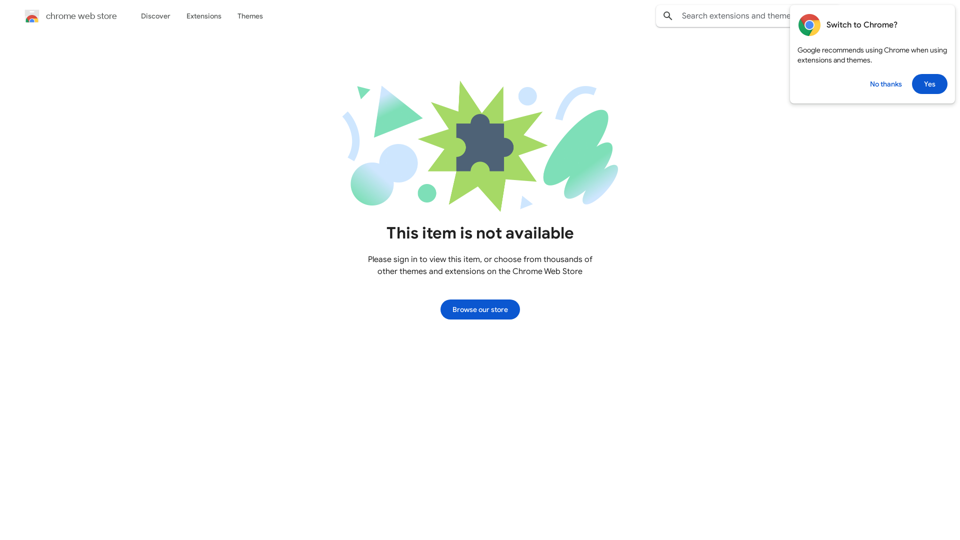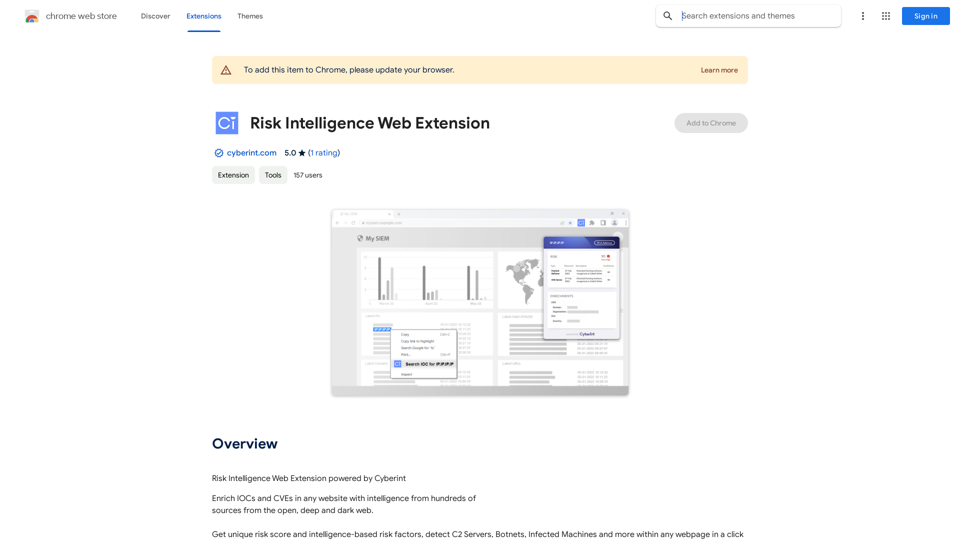GPT (Generative Pre-trained Transformer) is an advanced AI model trained on vast text datasets to generate human-like language. This powerful tool can generate text, answer questions, and create entire articles, making it versatile for various applications. GPT's ability to understand context and produce relevant, accurate text has made it a valuable asset in numerous fields.
ScanGPT
Our extension makes it simple to find GPT-generated text on any website or any text given to it.
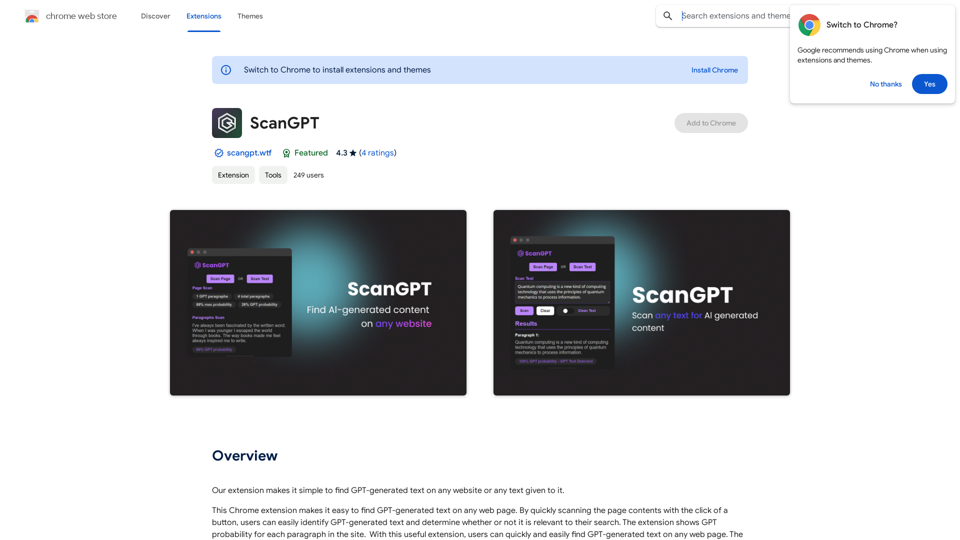
Introduction
Feature
Large-scale Training
GPT's extensive training on massive text datasets enables it to generate high-quality, human-like text across various topics and styles.
Contextual Understanding
The model's ability to grasp context allows for the generation of relevant and accurate text, enhancing its usefulness in diverse applications.
Flexibility
GPT's versatility makes it suitable for a wide range of applications, including:
- Text generation
- Question answering
- Content creation (articles, blog posts, etc.)
Pricing Options
GPT offers various pricing models to accommodate different needs:
| Model | Description |
|---|---|
| Free | Limited text generation capabilities |
| Subscription-based | Monthly or annual fee for enhanced service and features |
| Custom pricing | Negotiable rates for businesses with specific needs and usage requirements |
FAQ
What is GPT?
GPT is an AI model trained on massive text datasets to generate human-like language, capable of text generation, question answering, and content creation.
How does GPT work?
GPT utilizes a combination of natural language processing and machine learning algorithms to generate text.
What are the benefits of using GPT?
GPT offers high-quality text generation, question answering, and content creation capabilities. It can also automate tasks and improve efficiency in various applications.
What are the limitations of GPT?
While powerful, GPT is not perfect. It may occasionally generate inaccurate or irrelevant text and may struggle with complex or nuanced language understanding.
Latest Traffic Insights
Monthly Visits
193.90 M
Bounce Rate
56.27%
Pages Per Visit
2.71
Time on Site(s)
115.91
Global Rank
-
Country Rank
-
Recent Visits
Traffic Sources
- Social Media:0.48%
- Paid Referrals:0.55%
- Email:0.15%
- Referrals:12.81%
- Search Engines:16.21%
- Direct:69.81%
Related Websites
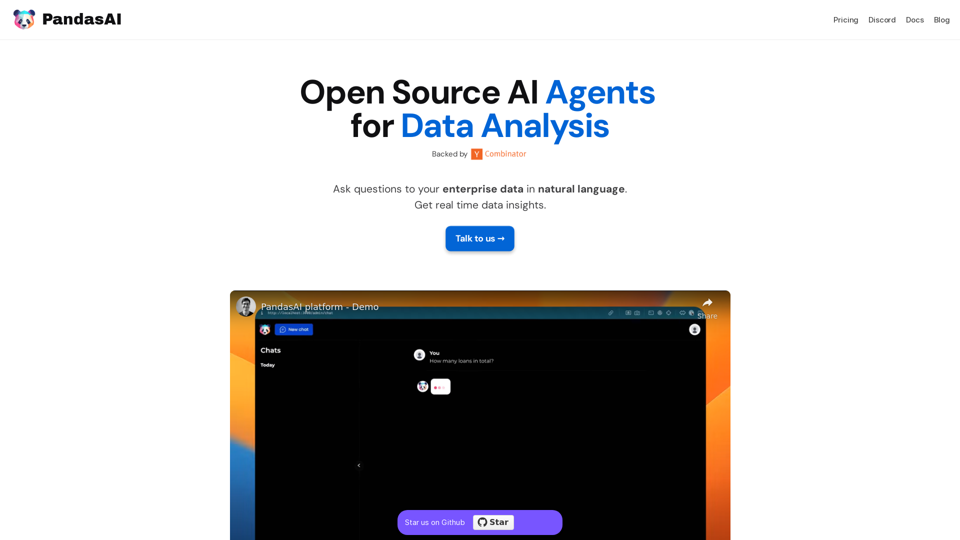
PandasAI is a Python library that integrates generative artificial intelligence capabilities into pandas, making dataframes conversational.
44.27 K
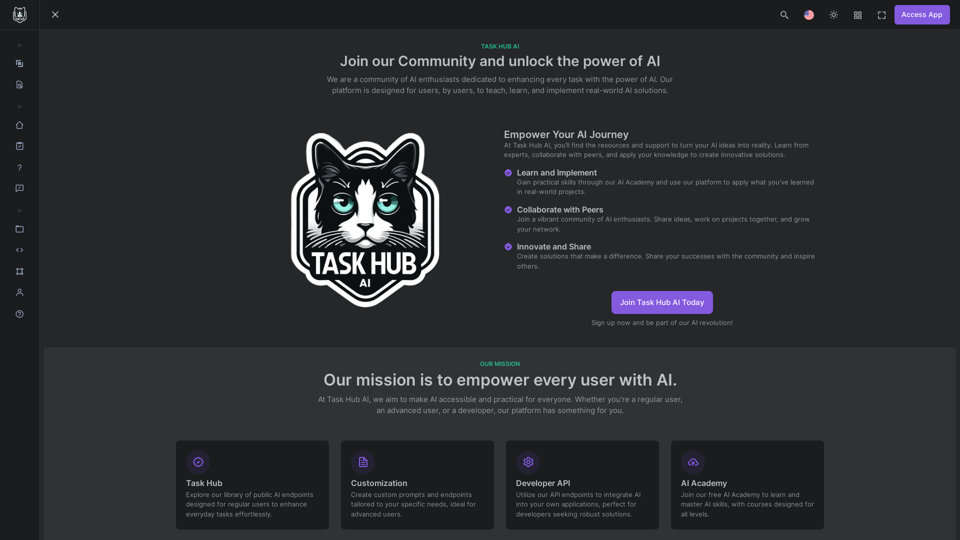
Unlock the power of AI with Task Hub AI. Learn from experts, collaborate with peers, and innovate with our AI community. Sign up now to turn your AI ideas into reality!
0
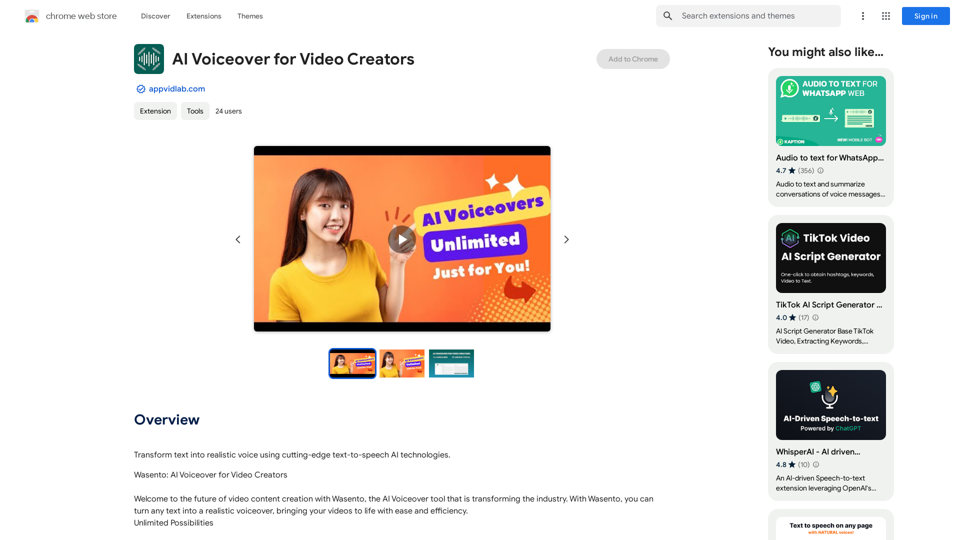
AI Voiceover for Video Creators Elevate Your Videos with Realistic AI Voices Tired of bland, monotone narration? Want to add a professional touch to your videos without breaking the bank? Introducing AI voiceover, the game-changer for video creators! Benefits of Using AI Voiceover: * High-Quality, Natural-Sounding Voices: Choose from a wide range of realistic AI voices, each with unique tones and styles. * Cost-Effective: Say goodbye to expensive voice actors and studios. AI voiceover is affordable and accessible to everyone. * Time-Saving: Generate voiceovers quickly and easily, freeing up your time to focus on other aspects of your video production. * Multilingual Support: Reach a global audience by translating your voiceovers into multiple languages. * Customizable Options: Adjust voice pitch, speed, and emphasis to perfectly match your video's tone and style. Perfect for: * YouTube Videos * Explainer Videos * Corporate Videos * E-Learning Content * Podcasts * And More! Get Started Today! Try our AI voiceover tool and experience the difference.
AI Voiceover for Video Creators Elevate Your Videos with Realistic AI Voices Tired of bland, monotone narration? Want to add a professional touch to your videos without breaking the bank? Introducing AI voiceover, the game-changer for video creators! Benefits of Using AI Voiceover: * High-Quality, Natural-Sounding Voices: Choose from a wide range of realistic AI voices, each with unique tones and styles. * Cost-Effective: Say goodbye to expensive voice actors and studios. AI voiceover is affordable and accessible to everyone. * Time-Saving: Generate voiceovers quickly and easily, freeing up your time to focus on other aspects of your video production. * Multilingual Support: Reach a global audience by translating your voiceovers into multiple languages. * Customizable Options: Adjust voice pitch, speed, and emphasis to perfectly match your video's tone and style. Perfect for: * YouTube Videos * Explainer Videos * Corporate Videos * E-Learning Content * Podcasts * And More! Get Started Today! Try our AI voiceover tool and experience the difference.Use state-of-the-art text-to-speech AI to make your text sound like a real person speaking.
193.90 M
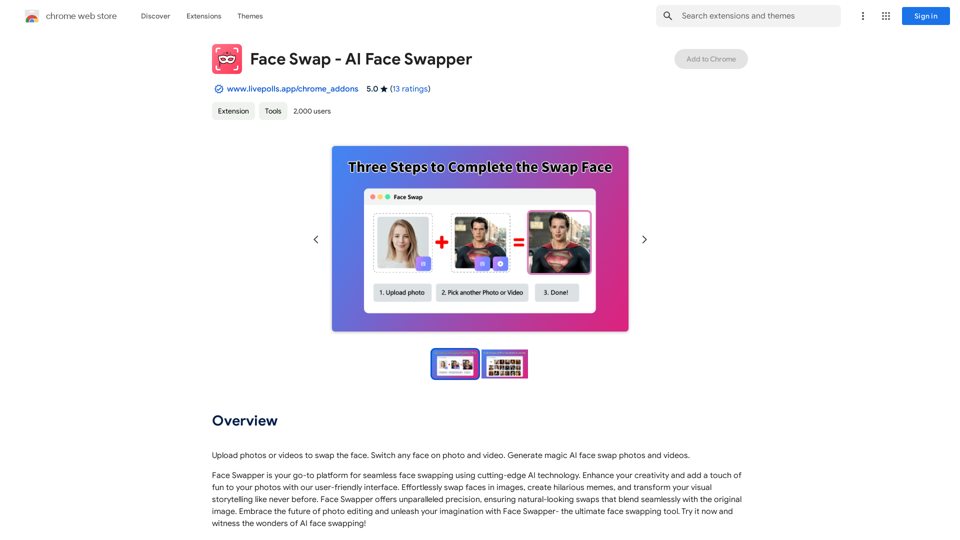
Upload photos or videos to swap the face. Switch any face on photo and video. Generate magic AI face swap photos and videos.
193.90 M
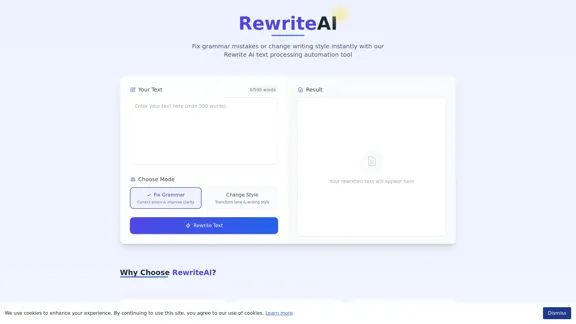
Rewrite AI - Correct Grammar or Alter Writing Style with AI
Rewrite AI - Correct Grammar or Alter Writing Style with AIRewrite AI assists you in refining your writing with immediate grammar corrections and style changes. Improve your content using our AI-driven writing assistant.
6.84 K
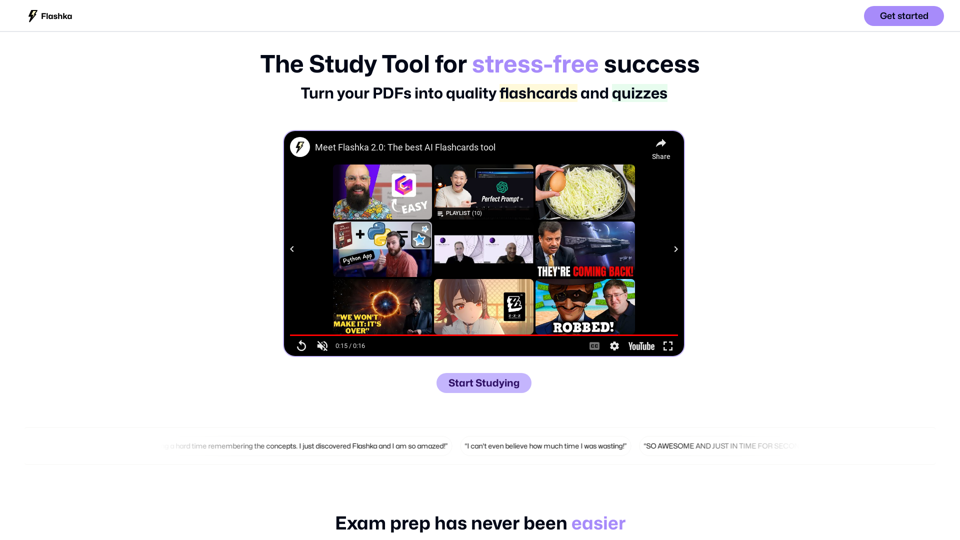
Flashka helps you learn by automatically generating flashcards and aiding you in the learning process.
287.56 K
